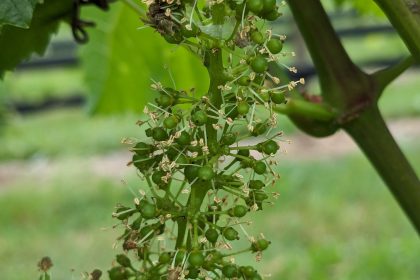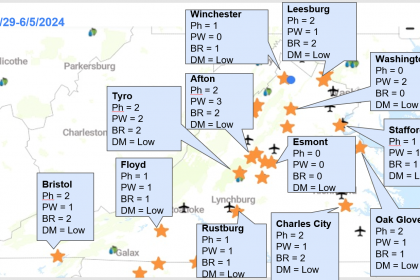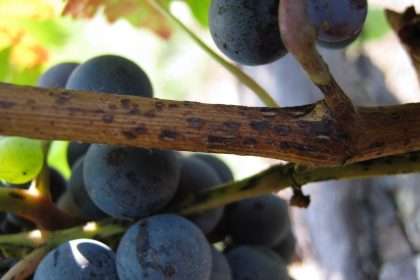I had several inquiries on the pruning wound protection in last few weeks, so, here’s some information about it.
Pruning wound treatment has been discussed in different places and with different contexts. In California where a disease called Eutypa dieback is a big issue, they tested a wound paste with boron (they called Biopaste), and it seems to protect wounds from the infection. In Australia and New Zealand, they have tested a product called Garrison which seems to work as well. However, these products are not registered, but in VA, Eutypa is not as a big problem as in CA. Thus, I’m not sure they will help us much, even if they are registered. One material that has been registered in VA is Topsin-M. It will be applied as a paint-on (It is a section 24(c) label for local use in VA. Please see the supplemental label here.) One of potential advantages of Topsin-M is that the label is also for Botryosphaeria which is very common in VA. If you would like to test this paint application of Topsin-M in your vineyard, please let me know. We may able to set up a small experiment.
The other regular wound paints, such as latex paints, are also used commonly (which does not require a registration), but the general consensus among growers (not only grape but also other crops) are that the paints are not very effective. Alternative method which has been discussed is a fungicide application as you would during the regular season, but we do not have any materials registered for such use. Moreover, it seems that the efficacy of the spray is not consistent and does not last very long.
Thus, my recommendation is that we need to go back to the basic, the cultural practice. The fungi and bacteria that cause diseases on grape require a certain temperature range and more importantly, a wet surface. Thus, if the pruning wound is dry, there will be fewer chances for the pathogens to infect the tissue. Please check the weather forecast before pruning and make sure you will get a nice sunny day or two to ensure the wounds will be dried out in a few hours. The rain fall will also initiate the pathogens to release spores, so, it is very important to avoid rain. Also you may want to avoid pruning during the late afternoon because once the night falls, temperature drops and relative humidity increases, then wounds will not dry out for an entire night until the sun comes up.
Make sure your pruning equipments are clean. Your old trunk may be infected with the pathogens, and they may have already produced spores that can be transferred from one vine to another. I understand that it will be very time consuming, but what you can do is make a 10% Clorox solution (10:90 Clorox:water solution) in a bucket, and dip your equipments between vines for 1-2 minutes.
Pruning surface shape and orientation is also important. If you make it flat and level, it can hold water. Thus, it is recommended to make a slant surface so that if there is rain, water will not stay on the surface.
Even though there are not well supported, if you would like to use a wound paint, I think it may help the vine in some extent. It may not provide much efficacy against pathogenic fungus, but sealing the wounds may provide a protection against other wood-decaying fungus in general.





